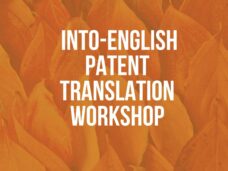How to Keep Your Foreign Clients
Overseas clients can be a steady and significant income stream for US attorneys. Typically, foreign applicants, who have already begun prosecution in their own countries, require less hands-on management than domestic filers. Given the added difficulty of shopping for services across borders, they are also more likely to be loyal once a steady relationship has been established. The one extra chore that working with these clients brings is arranging for translations. It is common for American attorneys to treat this as an administrative task to be delegated to support staff, but they may be missing their best opportunity to make a lasting impression on foreign clients.
This happens because of a knowledge gap. US attorneys who entrust their overseas counterparts with translations rarely give a second thought to the product that results. If they were to look at the application in Chinese or German, it would be little more than marks on a page. The same holds true for the attorney’s clients. While they are the ones paying for the translation, they have no way of deciding if they got good value for their money.
The situation is very different outside of the US. In European and Asian countries, everyone with a high enough level of education to be involved in applying for a patent can at least read English. The inventor, who has spent her working career reading journal articles and attending conferences in English, the in-house counsel or IP manager, who took English all the way through university, and the patent attorney, who plows through English prior art every day, will all be able to form an opinion on the language in the US specification. Some of them will even read it out of curiosity. If you’ve spent your life reading English written by other people, it can be fun to see something that you wrote, or helped to write, in the lingua franca of the modern world.
The importance of this evaluation becomes all the more evident when we consider that among these people, all of whom may have input in selecting which US firm handles their applications, only the patent attorney can know enough about US patent practice to form any real opinions as to how well the application was prosecuted at the USPTO, and even he may have stronger opinions on translation than on American legal practice. That is to say, the quality of the translation is often central to the evaluation of services rendered by US attorneys.
To make sure that you are making the most of this opportunity for happy clients, follow these basic steps:
- Choose your translation provider thoughtfully. Companies that specialize in translating e-commerce websites are unlikely to fully capture complex claim language.
- Leave yourself time to review when working with a new provider.
- If the language seems disjointed, unclear, or unusual, get a second opinion on the translation before filing. A good translation will read just as smoothly and clearly as a specification drafted in English.
- Check a few details yourself. Without speaking a word of the other language, you can check that numerical values in the embodiments and the reference numerals in the claims have been properly reproduced. You can also check whether numbered elements are consistently translated throughout. If there are problems with these basic things, there are probably other problems that are less easy to see.
- If you are not satisfied, ask for changes. In an ideal world, you should never have to do this, but it is worth knowing that even poorly performing agencies can often bring in more experienced translators to fix problems when clients have complaints.
The attorneys who we work for have often told us that their clients have complimented them on the quality of the translations that they provide. It’s more than just a feather in their cap, it’s a key part of building loyalty in some of their best clients.



